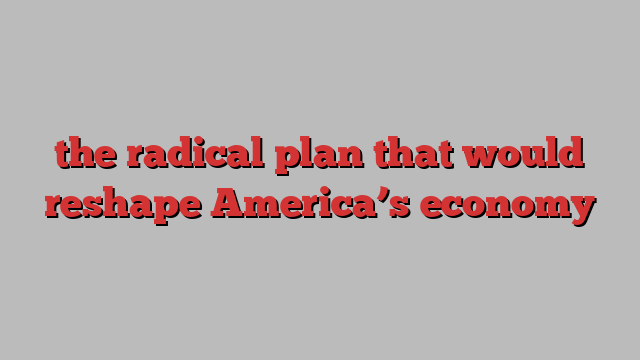
At a campaign rally in Tucson, Arizona, earlier this month, Donald Trump offered the audience some of his usual campaign bravado. He claimed to have enjoyed a “monumental” win over Kamala Harris in their presidential debate two days earlier and doubled down on his controversial false claims that Haitian immigrants are stealing and eating pets.
But a significant part of the former president’s speech focused on the economy, vowing to end the “mayhem and misery” Americans were experiencing under the administration of Joe Biden.
“We will deliver low taxes, low regulations, low energy costs, low interest rates and low inflation,” he promised. “So that everyone can afford groceries, a car and a beautiful home.”
Ever since he launched his campaign for a second term, Trump has hammered the Biden-Harris administration over the country’s cost of living crisis.
In Arizona, the former president offered the conventional Republican remedy of new tax cuts — ranging from income from overtime pay, tips and pension benefits to massive across-the-board cuts for individuals and corporations.
But this time round, Trump has also developed a much more populist economic policy agenda designed to present him as a defender of the interests of ordinary working people and domestic manufacturing.
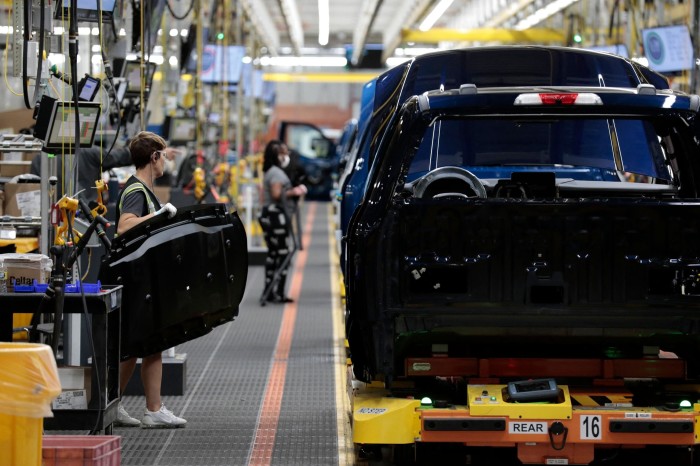
The main planks of what Trump calls “Maganomics” include more aggressive tariffs on imports from around the world, especially from China, and a draconian crackdown on immigration. The campaign’s rhetoric also pushes for greater political influence over monetary policy and the dollar.
With Trump’s statements as a candidate, it is not always easy to decipher what is a plan, what is bluster and what is a negotiating ploy. But economists of all stripes agree that Trump’s agenda represents a far more radical extension of the policies introduced during his term in office between 2017 and 2021.
If he were to win the election and actually implement the plans, they would fundamentally reshape America’s economy and its relationship with the rest of the world.
Within Republican circles, one of the most prominent supporters of this populist agenda is JD Vance, the vice-presidential nominee. “We believe that a million cheap knock-off toasters aren’t worth the price of a single American manufacturing job,” he said at a rally in July.
Critics warn, however, that the policies would be hugely damaging to the economy and would not help the US compete with China.
“If Donald Trump did half of what he’s promising, the results for the US economy would be chaotic and negative,” says Jason Furman, a former White House economist in the Obama administration, who is now a Harvard professor. “The biggest thing we have on our side against China is we’re part of a bloc of countries that get along pretty well. Putting tariffs on all of those countries would rip that apart.”
Stung by the criticism over their own record on inflation, Democrats have been quick to claim that Trump’s proposed policies would cause a further spike in prices and damage the economy.
“Sixteen Nobel laureates have described his economic plan as something that would increase inflation and, by the middle of next year, would invite a recession,” Harris said in the debate.
Even some supporters of Trump are worried about the international implications of America adopting such an aggressively protectionist approach.
“You need to trade, especially with your enemies. I’m not saying we sell nuclear weapons to [North Korea’s] Kim Jong Un. But you need to have trade so people talk to each other, they like each other, you’re buying from them, they buy from you,” says Arthur Laffer, an economist close to the former president. “All of this stuff of sanctions and threats of tariffs and all that stuff is not the right way to go. That’s a way of guaranteeing World War Three.”
At the core of Maganomics are ideas that would turn many aspects of the economic model adopted in industrialised economies over the last century on their head.
If enacted, they represent a return to an era where substantial chunks of government revenue came from trade tariffs, rather than from taxes on people’s incomes and the profits of businesses.
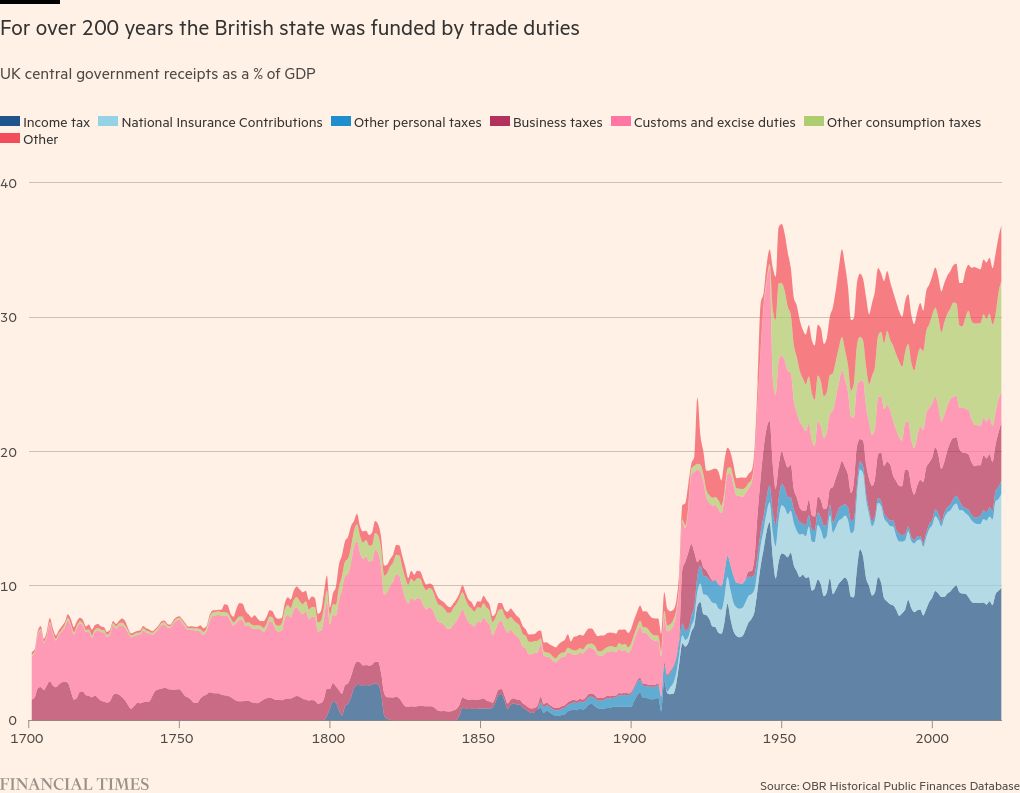
“He’s clearly thinking of fundamentally changing the sort of balance of revenue sources in the American tax system. And by extension, the way that we think about trade in the United States and our relationship with our trading partners,” says Ernie Tedeschi, director of economics at the Yale Budget Lab and a former official in Biden’s Council of Economic Advisers. “That was how we did things in the 19th century, not in the 20th century, let alone the 21st century.”
During his spell in the White House, Trump aggressively imposed tariffs on China — many of which were kept under Biden.
However, under the ideas being considered, a second term of Trump would see levies on imports supercharged to levels last seen during the 1930s following the passing of the landmark protectionist Smoot Hawley Tariff Act.
After initially saying he wanted to impose 10 per cent tariffs on all imported goods, Trump has recently said they could be up to 20 per cent. For Chinese imports, he has talked about imposing a 60 per cent tariff. This month he said countries that planned to reduce their dependence on the dollar would also be hit with 100 per cent tariffs as punishment.
Trump hopes the trade barriers will not only raise revenues, but lead to the restoration of US manufacturing. Treasury Secretary Janet Yellen this year estimated 2mn US manufacturing jobs have disappeared since China joined the World Trade Organization in 2001.
“When they come in and they steal our jobs, and they steal our wealth, they steal our country,” he told Time Magazine in April. “I call it a ring around the country.”
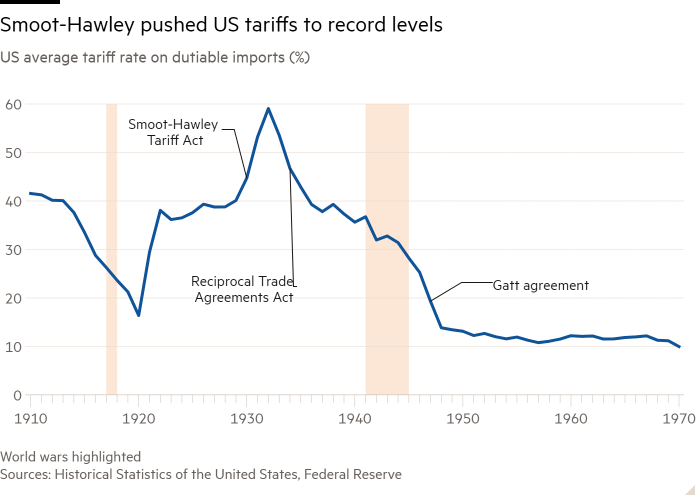
There will be costs to such a policy, however. The Peterson Institute for International Economics think-tank in Washington calculates that 20 per cent across-the-board tariffs combined with a 60 per cent tariff on China would trigger a rise of up to $2,600 a year in what the average household spends on goods. They say that the tariffs would disproportionately hit the low-income households that Trump claims his economic policies help protect.
Tariffs could also hamper growth, according to some economists. “The last time we were in a trade war under Trump, the global manufacturing cycle went into a recession,” says Julia Coronado, a former Fed economist who now runs MacroPolicy Perspectives, a consultancy.
Mary Lovely, one of the authors of the PIIE study, says there is a risk trade barriers become an easy tool to overuse. “Tariffs do not show up on the government budget, even though they are equivalent to a subsidy to domestic producers,” she says. “They are also simultaneously a tax on consumers, but many voters do not perceive tariffs as a tax.”
Laffer believes Trump is using tariff policy to get countries around the negotiating table and to agree to remove their own barriers to trade. “That’s my story. I’m gonna stick to it. And I’m probably wrong, but that’s what I believe is true.”
Yet despite the potential costs, many voters support the tariffs, especially in manufacturing-heavy swing states such as Michigan.
“I don’t know why we wouldn’t have tariffs on everything coming from China,” says Nelson Westrick, a worker at Ford who lives in Macomb County close to Detroit. “And everything from Mexico too.”
Trump’s advisers claim the tariffs will raise funds to help cover a staple of Republican economic policymaking — tax cuts. Specifically, a second Trump administration plans to make permanent the lower tax rates introduced during the former president’s term in office.
Republicans claim that the 2017 tax cuts on income and investment, which were otherwise set to expire in 2025, will help spur growth. That in turn will help address the US government’s ballooning fiscal debt burden, they say.
“The single most important thing to solving the debt is to grow the economy much faster,” says Stephen Moore, an economist close to Trump. “There’s a lot in Trump’s agenda that would do that. Reducing tax rates will help grow the economy, producing more American energy will help the economy, better trade deals will improve the economy. Trump has also talked about cancelling hundreds of billions of dollars of these green energy programmes. That would save a whole lot of money.”
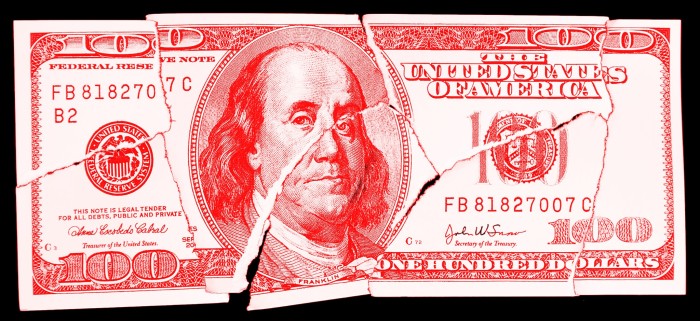
20%
After initially saying he wanted to impose a 10 per cent across-the-board tariff, Trump has recently said they could climb to this level
$2,600
The Peterson Institute calculates the combination of tariffs would lead to this annual rise in average US household spending costs
$5.8tn
Penn Wharton Budget Model has estimated that Trump’s plans would raise US deficits by this amount over the next decade
Moore adds: “I can hardly point to a single government programme the Democrats want to get rid of and Trump’s talked about hundreds of programmes and budgets that he [would have] eliminated.”
However, many economists say the Trump campaign’s sums do not add up. “[It’s] always said that [tax cuts will fund themselves], but it’s never happened,” says PIIE senior fellow Maury Obstfeld.
If anything, economists claim they could stretch the US’s already strained finances even further.
“Tax cuts will add to deficits, and in a full employment economy, like the one we have now . . . that will be inflationary,” says Mark Zandi, chief economist at Moody’s Analytics. “We won’t make any progress addressing the nation’s poor fiscal situation, which is a serious concern that is growing more serious by the day.”
The dominant criticism of the Trump agenda is that it will be nigh on impossible to cover the cost of tax cuts through tariffs.
Penn Wharton Budget Model, a research group, has estimated that Trump’s plans would raise US deficits by $5.8tn over the next decade. Meanwhile the conservative Tax Foundation think-tank estimated that his new plan to exempt overtime work from federal levies would cost the US a further $227bn in lost revenue over the next decade.

However, PIIE senior fellows Obstfeld and Kimberly Clausing think that the maximum amount of additional revenue the administration can raise — by applying a 50 per cent tariff on everything — would be $780bn.
“If we wanted to completely replace the [revenue raised from] income tax with a tariff, we would need at least a two-thirds tariff. And then you have to remember that people are going to start substituting away from imports and then there’s going to be retaliation and so on,” says Tedeschi of the Yale Budget Lab. “It’s impossible to make the math work. You probably can’t raise [tariffs] high enough.”
Gary Cohn, the vice-chair of IBM and Trump’s former top White House economics adviser, told CBS earlier this month that he did not see the appetite in Congress for passing Trump’s tax plans. “I do think there is growing and growing opposition in both the House and the Senate, and I would say on both sides of the aisle, for a large deficit tax plan,” he said.
Some investors and economists also fear Trump’s attempts to gnaw at the US Federal Reserve’s independence.
During his term in office, Trump repeatedly, and very publicly, bashed Jay Powell on what was then called Twitter, at one point questioning whether the Fed chair was a bigger “enemy” of America than Chinese leader Xi Jinping.
The Republican candidate remains critical of Powell. The Fed “has gotten it wrong a lot”, Trump said last month, adding that his business background meant he has “a better instinct than, in many cases, people that would be on the Federal Reserve or the chair”.
Following the Fed’s decision last week to lower interest rates by half a percentage point, Trump said it showed the US economy was either “very bad” or the central bank was “playing politics”.
Robert Lighthizer, US Trade Representative under Trump and still a close adviser, has voiced his desire to weaken the dollar in a bid to boost sales of US goods abroad — a policy that low rates would potentially support.
Some members of the Trump camp believe that the surge in inflation in recent years means the administration should hold more sway over monetary policy.
“Joe Biden is going to be held accountable for inflation, whether it’s his fault or not. That’s the political process. And what you want to do in political processes, according to my way of thinking, is if someone’s going to be held accountable for something, he should also be responsible for it,” says Laffer. “If they [the Fed] make a mistake and do something wrong, what happens to those Fed members? Nothing. They don’t even lose their jobs.”
However, some economists warn that any moves to weaken Fed independence could rattle markets and eventually trigger even more inflation.
“Long term inflation expectations are anchored by the judgment that a politically independent central bank will impose restrictive policy if inflation becomes excessive,” says Larry Summers, a professor of economics at Harvard University who has served under Democratic administrations. “If that expectation is allowed to dissipate, that means higher wages and prices as everybody anticipates more inflation.”
Zandi of Moody’s queries any proposal to engineer a weaker dollar. “I don’t know how they plan to get the value of the dollar down for any length of time,” he says. “They could try to capture the Fed and run a very loose monetary policy. But while that may work for a short time, it would quickly become inflationary and highly counterproductive.”
The Fed’s independence has been codified in the law for over a century and makes the institution accountable only to Congress, rather than the president. That means any substantive changes, including personnel, cannot be forced through by the executive branch but rather must garner the support of a vast majority of lawmakers.
“Congress designed the Fed to make it really hard for any president to disrupt its leadership in one term in office,” says Gary Richardson, who served as the historian of the Federal Reserve System from 2012 to 2016. “They can complain a lot, but the Federal Reserve doesn’t have to respond to those complaints.”
Powell’s second term as Fed chair is due to end in May 2026, setting the stage for Trump to name a successor who is more amenable to influence by the executive branch if he wins the election.
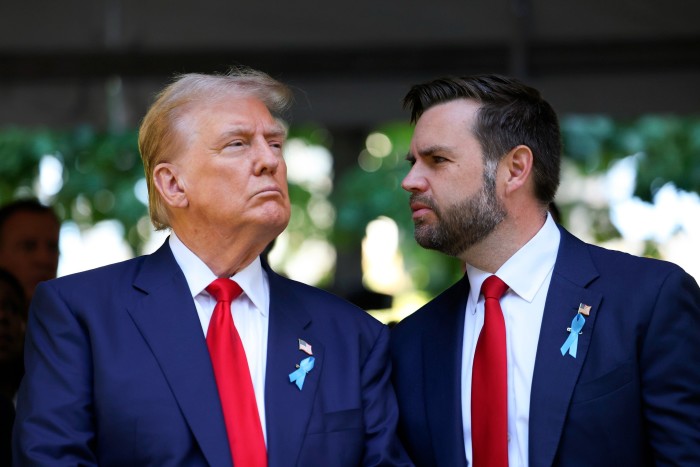
But the next president would only have limited scope to reshape the Fed’s seven-strong board of governors. Adriana Kugler’s term is the earliest to expire in January 2026. The next opening would not come up until 2030, when Christopher Waller’s term is up.
While Trump has sought to allay fears that he would try to get rid of Powell before his term is up — something that would be legally dubious, according to experts — he added a critical caveat.
“I would let him serve it out,” the former president said. “Especially if I thought he was doing the right thing.”
Sarah Binder, political science professor at George Washington University, says she expects Congress to “stand up and defend the Fed” if there was a push for more interference by a second Trump administration.
“Ultimately it’s a matter of norms,” says Binder. “How far is Trump willing to exert his authority?”
Data visualisation by Keith Fray